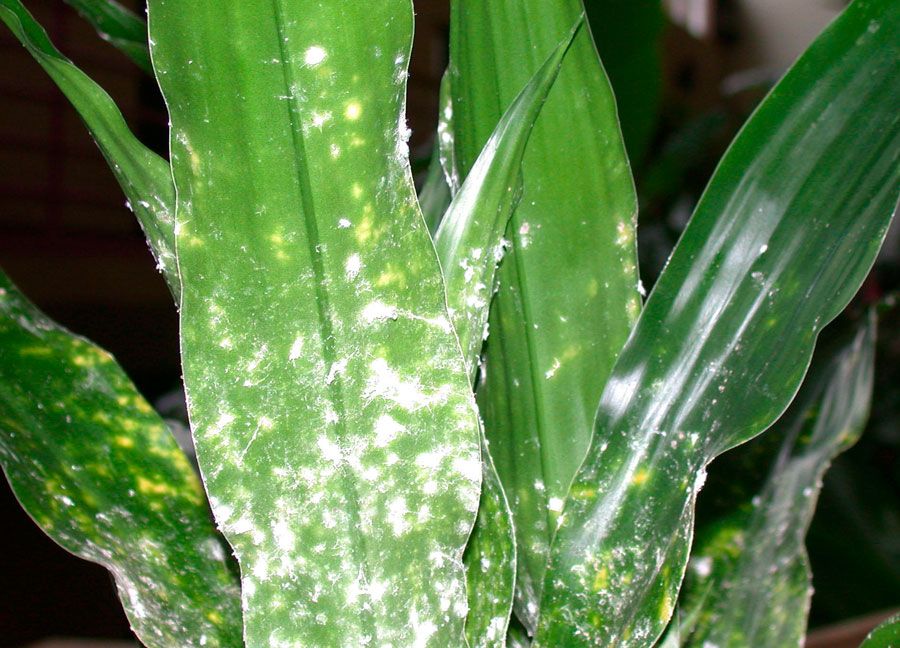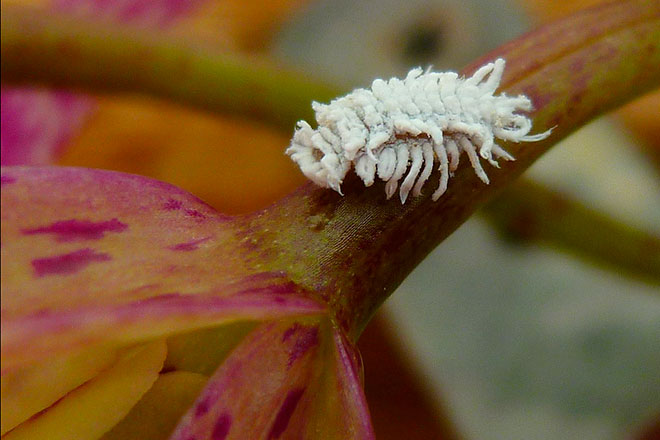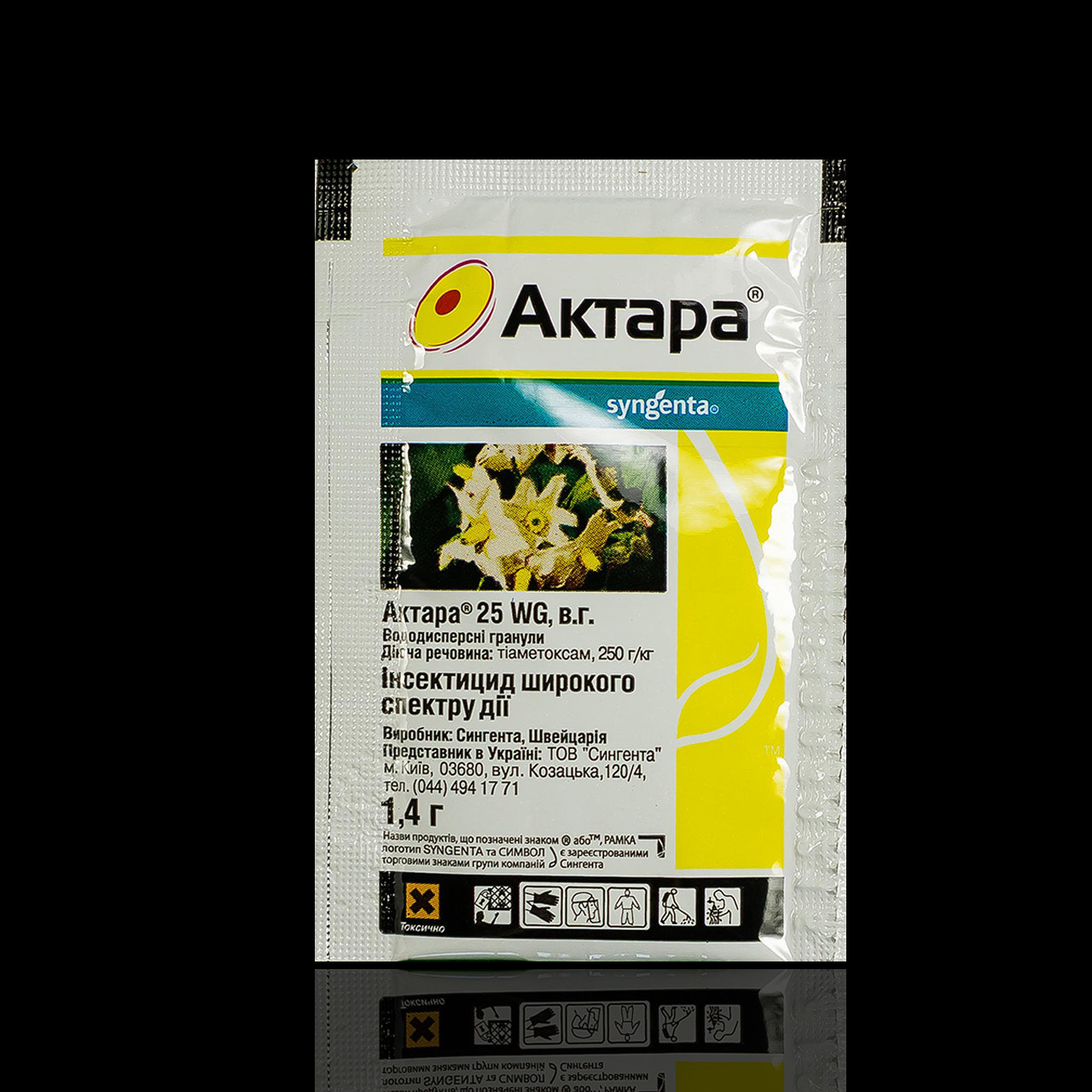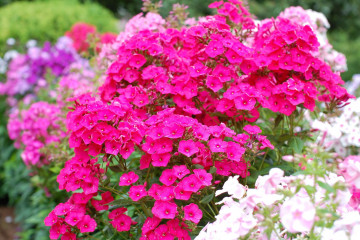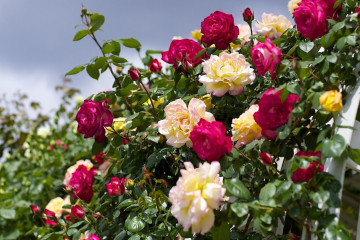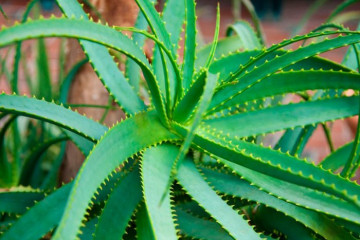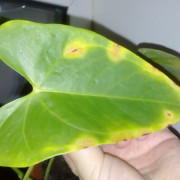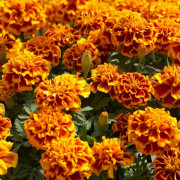Mealybug on an orchid: how to get rid of pests and remedies
Content:
The appearance of a mealybug on orchids is a real disaster for flower growers, because it is very difficult to get rid of the parasite. Despite the fact that there are no problems with the detection of an insect, plant lovers note the fact that even repeated treatments do not guarantee the complete destruction of the worm.
Reasons for the appearance of a mealybug on an orchid
Insects choose weakened plants kept in violation of the conditions for their habitat:
- unsuitable temperature regime;
- insufficient or excessive lighting;
- improper feeding.
The most popular among mealybugs are orchids, which receive an excess of fertilizers containing a large amount of nitrogen.
Domestic flowers are attacked by the parasite mainly in winter. At this time, there is a decrease in daylight hours, and orchids experience a lack of natural light. Some plant lovers forget about the backlight, besides, the humidity indicator changes, because the heating system starts its work.
However, even in summer, no one is immune from the appearance of insects. Ideal conditions for the worm are created at an elevated temperature range from +23 to + 27 ° C, especially if the plants are not sprayed on time.
The parasite can enter the house in the following ways:
- a store-bought orchid is already infected;
- the ants brought the larvae into the room;
- the wind is also a carrier of insects;
- the potting mix contains larvae.
Having dealt with the ways of the appearance of a mealybug on an orchid, it is worth talking about the symptoms that appear on plants:
- buds, flowers, young pagons are covered with fluffy white lumps, under which females lay eggs;
- leaf plates and petals are covered with a sticky secret;
- deformation of plant parts;
- the appearance of spots of brown-brown color, as well as putrefactive areas.
Types of mealybugs
The Hemiptera family includes more than 2,200 different species, including the orchid pest. Plants suffer most from bristly and citrus bugs. It is worth getting to know these parasites in more detail.
Bristly
Adults have the shape of a long oval body of about 3.5 mm. The color can be orange or pinkish, there is always a white bloom. The parasite has well-developed limbs, which allows it to easily move from one plant to another. Most often, the worm can be found on the undersides of the leaves, in their axils. Pests live in colonies.
It is quite simple to notice the bristly worm - after it there is a powdery coating of white color and waxy formations, similar to cotton lumps, they are also white. After damage, the leaves begin to turn yellow and subsequently fall off.
Citrus
Individuals have a variety of color variations, there are both light yellow and brown.It is typical for females to secrete a sweet secretory fluid, which is also called padya. Males have the ability to fly, look like flies with yellow and pink colors.
Methods of dealing with the worm at home
Removing parasites is not as easy as it seems. When conditions are unfavorable, insects release wax in large quantities, which will protect them from the effects of chemicals. Eggs cover the cotton-like fibers from harm.
If a mealybug is found on orchids, then the plants must be isolated from others. As for the methods of struggle, then it is necessary to look at the degree of spread of the infection.
Flowers, buds or peduncles inhabited by parasites must be removed. Some types of flowers have pseudobulbs that cover dry scales. These growths are also removed, the bulb is treated with alcohol applied to a cotton swab. This measure allows you to get rid of the larvae, which are difficult to see due to their microscopic size.
The fight begins with mechanical removal of the worm. Insects, together with cotton bags, are removed using tweezers, then destroyed. The places where the worms were found must be disinfected using alcohol tincture, the plant itself is thoroughly washed. Thanks to this procedure, sweet secretory fluid and remaining pests are removed. To wipe the leaves, use a soap solution and a cotton swab.
Folk remedies for mealybug
How to get rid of a mealybug on an orchid? The plant can be cured using proven products that do not contain chemical components. There are soap, alcohol, oil and other types of infusions.
Making soap solution, folk recipe:
- Laundry soap in crushed form - 20 grams;
- warm water - 1 liter;
- alcohol - 1 tablespoon.
Mix the components and dissolve in water. The product is used to wipe the leaves, it helps to remove parasites. Particular attention should be paid to the locations of the parasite cocoons.
Garlic infusion
For cooking you will need:
- garlic - several large cloves;
- boiling water - ½ liter;
- chopped garlic cloves are poured with boiling water and infused for 4 hours.
Before using the broth, strain it. A brush is dipped into the tool, with its help the whole plant is treated.
Infusion of horsetail
A quick way to get rid of mealybugs is to use a horsetail solution. The herb itself is purchased in a pharmacy and is diluted with water in a 1: 1 ratio. You need to spray the plants with infusion.
Vegetable oil
You can use both olive oil and sunflower oil. It is diluted in the amount of 2 tablespoons in water (1 liter). Leaves are processed with a brush or spraying.
Chemical means for the destruction of the worm
Chemistry comes to the rescue in cases where there are no results after mechanical processing or folk methods. You can purchase the necessary preparations at a specialized gardening store.
As for the methods of using the funds, before helping orchids, you need to carefully study the instructions that are on the packages or located inside them. In cases where a very large amount of the final solution is indicated, then to reduce the dosage, take ½ of the proposed volume. It is convenient to measure liquid products with a syringe having the required volume.
Which drug to choose
At the moment, there is a huge number of chemical developments, the most effective action for the following:
- "Aktars";
- Actellika;
- Bankola;
- Mospilana;
- Fitoverma.
The listed products are toxic, therefore, during use, you need to be careful and take care of personal protective equipment, such as gloves and a dressing gown. If the drugs get on the mucous membrane, then the place is washed with plenty of running water. In case of persistent pain and redness, you should consult a doctor.
The use of drugs in full accordance with the instructions will avoid overdose and harm to the plant. An increase in the amount of funds or the frequency of treatments in an unauthorized manner leads to the fact that the orchid receives chemical burns.
All of these products help fight insects.
Infection of the root system with mealybug
When the parasite appears in the roots, the process of decay may begin, which will lead to the death of the plant. To rid a flower of insects, you need:
- Remove the orchid from the pot, remove the substrate;
- The product is diluted, according to the instructions, in a container of a suitable size, where the plant is then placed. Processing time should be specified, if not, then 20 minutes will be enough;
Preventive measures
Any disease is always easier to prevent than to cure, therefore there are a number of measures to prevent the appearance of a mealybug:
- Purchased orchids must be quarantined for 14 days to ensure that the plants are healthy.
- Periodic inspections of flowers for the appearance of pests. Small colonies of worms are much easier to destroy.
- Control over the correct conditions of detention. Healthy plants are rarely attacked by parasites.
The appearance of diseases and pests on orchids is not a reason for panic. First of all, problematic specimens are isolated, and treatment begins. In the larval stage, worms even survive chemical treatment; it is necessary to return the plants to their permanent residence only after their complete recovery.

